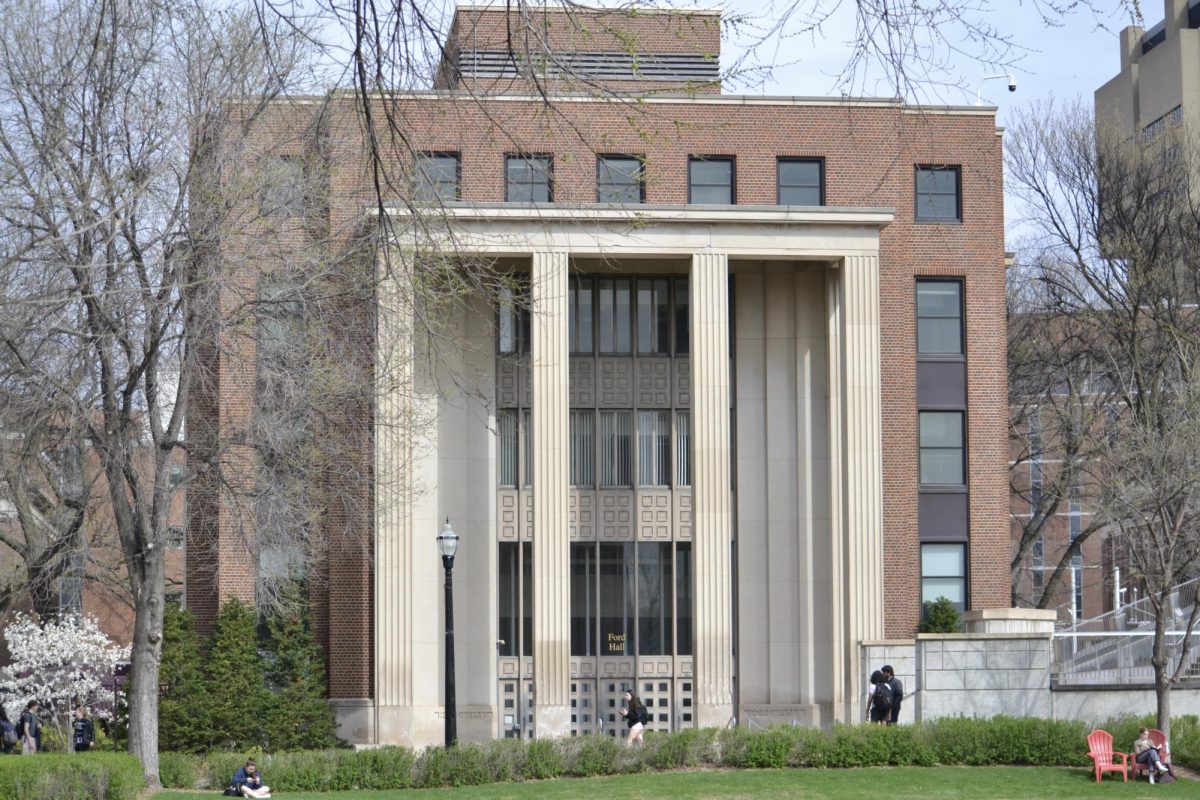The University of Minnesota Board of Regents approved the 2010 request for funding from the state Friday, a sum of $193.3 million. The money will go toward the renovation and construction of buildings in the University system. The bulk of the request is $100 million for Higher Education Asset Preservation and Replacement (HEAPR) funding, dispersed to the University system for building repairs and renovations. Specific projects make up the rest of the request. On the Twin Cities campus, interior renovations to Folwell Hall would cost $34.5 million and a new Physics and Nanotechnology building is estimated at $80 million. Other projects include a $10 million American Indian Learning Resource Center at the UniversityâÄôs Duluth campus, $10 million for general laboratory renovations and $5.5 million for the Itasca Biological Station. The University has to pay for one-third of the projects outside of HEAPR, totaling $46.7 million. Combined with the stateâÄôs portion, the total request reaches $240 million. Regents voiced concern that the state will hesitate to fund the physics building because it surpasses what University President Bob Bruininks calls the âÄúpsychological thresholdâÄù of a $50 million request. Bruininks said the University will press for the physics building because the nature of the research slated to occur there will keep the University relevant and competitive. Christina Brakken-Thal, graduate student representative to the board, said the University âÄúwill fall way behindâÄù if this building is not constructed. Regent Dean Johnson urged administrators to complete a comprehensive list of projects needing HEAPR funding so lawmakers will understand how badly the University needs those funds. Historical allocations show the state significantly reduces its giving toward HEAPR; last year the University requested $100 million and received only $35 million. Vice President for University Services Kathleen OâÄôBrien assured the board the University has established a âÄúvery solid HEAPR listâÄù and will provide the state with information to prove their case for $100 million. When the administration proposed the request at SeptemberâÄôs regents meeting, Folwell was listed as a $36.5 million project. The estimate has lowered since then, savings which Bruininks attributed to an economically favorable construction climate. The Legislature will consider the UniversityâÄôs request for funding when it convenes in February.
$50 million shortfall
Money given by the state used to be the largest contributor to the UniversityâÄôs budget but has decreased significantly, leaving the University in a financial lurch, according to a report by University administrators to the Board of Regents Thursday. Tuition is now the largest University income source and state funding makes up about one-fifth of the budget, according to the report. If the trend continues, administrators anticipate âÄúat least a $50 million shortfall in 2012 and a $1.1 billion annual shortfall by 2025.âÄù President Bruininks and the UniversityâÄôs Chief Financial Officer Richard Pfutzenreuter outlined several strategies Thursday that could help the University adapt to such a âÄúparadigm shift.âÄù They recommended that the University broadens its scope for revenue, clarifying the responsibility of the state and attracting more private giving. They also included the need to increase revenue from tuition while keeping the University financially accessible. Cutting or consolidating programs to focus on others that have potential to be âÄúamong the best in the worldâÄù was also addressed in the report. Savings from such programs would allow more funding for those that would make the University distinct, it stated.
âÄúFull breadth of the missionâÄù
The University has been incorporating sustainable practices for a number of years, but Thursday a committee presented system-wide goals to move the University as a whole toward solving environmental problems. Bruininks charged the UniversityâÄôs Sustainability Goals and Outcomes Committee (USGOC) with the task of establishing system-wide goals in April 2008. The task was given in accordance with the Sustainability and Energy Efficiency policy adopted by the Board of Regents in 2004. The policy calls for a commitment to incorporate âÄúsustainability into [the UniversityâÄôs] teaching, research and outreach and the operations that support them.âÄù At ThursdayâÄôs meeting, the committee highlighted the most important of its 27 goals to be applied in areas including operations, research and education at the regents Facilities Committee meeting Thursday. OâÄôBrien said the UniversityâÄôs route for setting goals is unique because they address so many aspects of the University. Besides constructing green facilities and encouraging research that will address environmental issues on an international scale, the University wants to create a curriculum to connect subjects of environment, society and economy. Amy Short, sustainability coordinator, said the University also wants to become a leader in sustainability by showing how itâÄôs done and not just talking about it. She noted the effort to introduce sustainable living to first-years at Welcome Week by serving âÄúzero wasteâÄù lunches and cutting down on the use of paper. The goals listed by the committee do not contain specific benchmarks, but Short said they are meant to be broad and will be made more specific in the future. âÄúWeâÄôre going to need to fine-tune the goals and the metrics,âÄù Short said. âÄúWe will review as we move forward to make sure weâÄôre on track.âÄù










